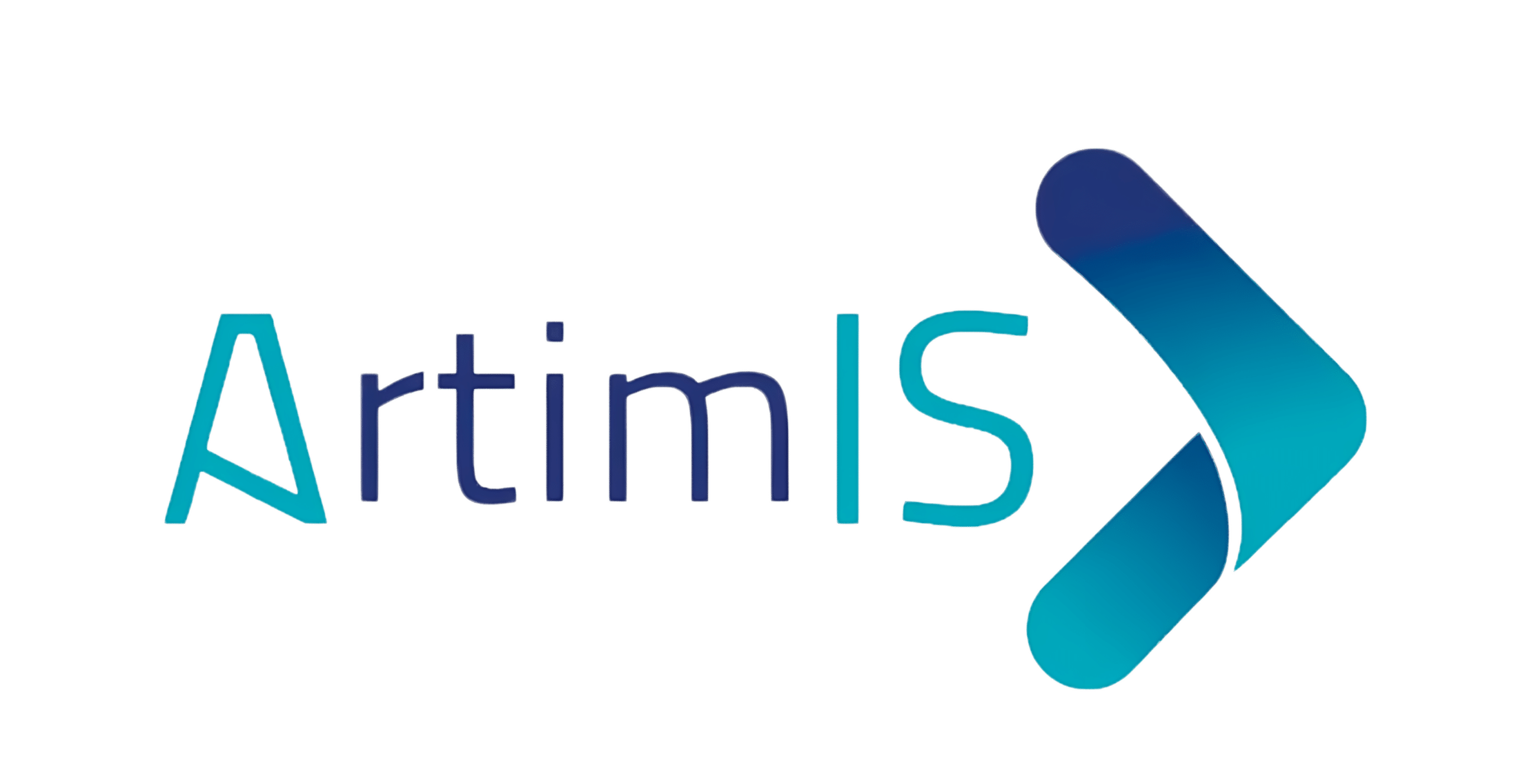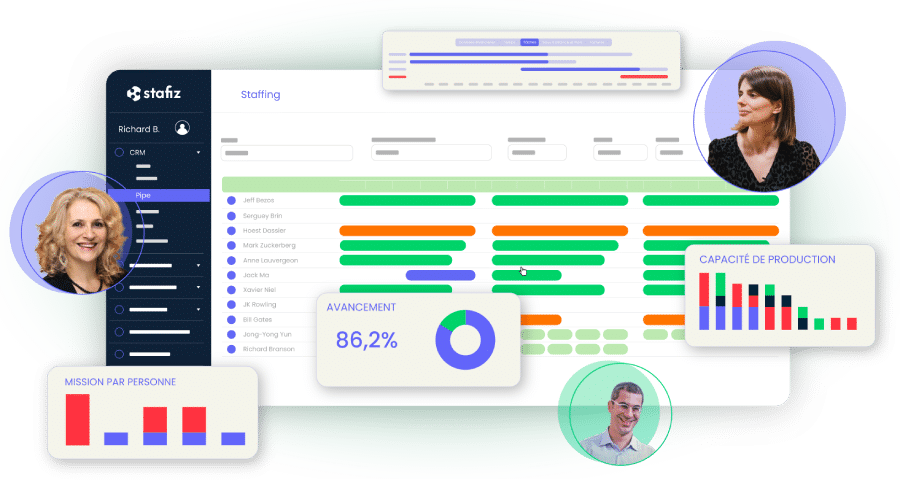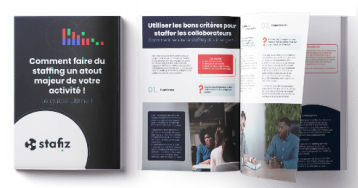Preparing your business for recovery – October 2021
IT Services
How to maintain the performance of your teams after the crisis?
- Follow-up with prospects
- Be informed of new measures and organize accordingly
- Continue to adapt to work in hybrid mode
- Gain visibility into the team schedule
With this rebound in the economy (a forecast of 6% for 2021), a positive end to the year is on the horizon! With the level of employment returning to its pre-crisis level, your new teams are waiting for you. Don't miss any opportunity and face new challenges by equipping yourself with an ERP for better management of your business.
The start of the school year in September 2021, and especially the second post-COVID-19 school year, was like no other. Even though we have already experienced a complicated start to the school year in 2020, it has had its own challenges.
This fall, the IT Services, consulting and professional services companies are exposed to an economic context that is still different from last year. This remains complicated to anticipate despite the similarities linked to the current health context.
The practical conditions for this return to work are less of a challenge, as company employees are now used to working from home. They saw the activity interrupted the previous year and experienced the resumption of face-to-face work at least 50%.
Can we hope that 2021-2022 will be a return to "normal"?
Logically, remote working is likely to be continued for health reasons. Team meetings in the office and with customers on site will be possible, but may be limited. Hopefully, gradually, the limits will be lifted entirely.
Once again, this year will require creativity, flexibility, the ability to take a step back and question oneself in the face of legal, logistical, health and economic concerns. The transformation of working methods continues, we will have to continue to innovate and adapt. It's the new routine and some see the benefits despite the decline in activity in 2020!
Indeed, "More than 7 out of 10 companies experienced a decline in their activity in 2020. For the French digital sector, the impact on turnover due to Covid-19 is estimated at around €2.7 billion."
However, "53% of IT Services and ICTs believe that the crisis has had an accelerating or triggering effect on their partnership policy with other digital companies."
And "61% of IT Services and ICTs believe that the Covid-19 crisis has had an accelerating effect on their digital transformation."
With the growth rate estimated at +1.0% for 2021, we know that this figure can only increase and exceed predictions. And this is already underway in digital service companies...
The relationships between employees and the tools used on a daily basis will continue to evolve positively if the culture of digital transformation has been established within your company in the past year.
However, the same critical questions remain to be asked since last year:

Indeed, in addition to monitoring and complying with health safety instructions, other elements must be taken into account to return to work safely and strategically.
1. Follow up with prospects
Raising prospects and revitalizing customer prospects is obvious. The growth of your business must continue to climb. It is a question of making themselves essential in their return to school and never leaving their perimeter:
You have to stay in the prospect's head so that he can't forget you.
Different techniques exist and are implemented in all areas of industry. The distribution of a newsletter to your target audience, attaching elements demonstrating your expertise, your experience and the real added value of your service. Regular activity on social networks and other media. The regular creation of quality and relevant content, etc. These are so many examples of techniques used and usable.
The post-COVID-19 situation to which we are now more or less accustomed still imposes a few rules. As a result, consulting and professional services firms will not be able to meet with clients as many times as they would like. Or they will be able to do so mainly remotely until the situation improves. The same is true for face-to-face networking events.
Travel and meetings are allowed in France, and the rules have been very relaxed since the vaccination is underway. This does not mean that everything is possible again, and we cannot predict the next government restrictions – assuming that there will be.
2. Inform, communicate and organize
Faced with this still unpredictable and risky context, companies will continue to be flexible.
Inform or remind people of safety instructions and procedures.
This is a priority in order to comply with the law. But also to guarantee the safety of employees, potential visitors and customers. Complying with these measures allows structures to be spared against real risks.

It is important to be informed about the situation and the evolution of the crisis. Communication with employees is essential to organize teams accordingly and remain operational in any circumstances.
There will still be work at home and perhaps possible, but limited, travel. Whether it's at the customer's site or groupings in the office between teams, you will have to continue to be flexible for some time to come. Many employees will make the decision or be instructed to stay at home again. This will be less difficult than in 2020, but it still represents its limits.
Training on the use of digital tools must not stop.
Your business will continue to grow if employees maintain their performance with these tools that allow them to work from anywhere.
See this article on how to support your teams towards digital transformation.
The restart period is ideal for setting up these training courses for employees. This is an opportunity to start a new year by innovating and improving internal collaboration with tools such as an ERP for consulting companies.
Links to official guidelines from the European Union and the United Kingdom:
Infographics, posters and leaflets about COVID-19
COVID-19: guidance for the workplace
3. Continue to adapt to hybrid mode
For those who want to: offer them to work partly remotely. For those who are ready to return to face-to-face work every day, allow them to work in the best conditions.
For example, large companies like Microsoft, Uber, and Google have opted for hybrid work since March 2021. "The ride-hailing company is limiting the capacity of its offices to 20% and many measures are being taken to limit the risk of contagion. (…) This is done on a voluntary basis, and its policy on teleworking applies until mid-September 2021." What about this autumn for these companies? Everyone seems to adapt over time.
As a result, companies have metamorphosed alongside this flexibility since the beginning of 2020. They have had to learn to manage a new division of tasks and absence management in a more comprehensive way and adapted to the lack of face-to-face interactions. These changes and new trends will continue this year.
The IT Services, consulting and professional services firms will themselves benefit from actively listening to their clients and network on the various concerns about the management of organizations. As well as possible strategies for 100% return to work. It is important to remain attentive to all the actors involved. This is the way to build the best possible working environment together. This is done by connecting leadership and employees in this context that has become our daily life.
Some organizations are encouraging full remote work, while others are doing everything they can to prepare for a normal resumption. And you? Is hybrid mode right for you?
4. Gain visibility into team planning, load tracking, and resource management
A post-COVID-19 back-to-school season is also an opportunity for companies to take advantage of these troubled times to convert them into an optimization phase in order to maximize their performance.
The start of the school year is the time to equip yourself with an ERP!
Many questions have been asked since the start of the 2020 school year:

Consulting and professional services firms have learned that it is necessary to equip themselves with tools that are flexible and efficient enough to facilitate visibility into the work of teams. An ERP for a consulting company, for example, can simplify remote processes. Especially when the teams are located on different sites.
Under the current conditions, the intelligent distribution of the workload according to individual and technical capacities and the careful monitoring of production capacities in relation to the expected workload – is an essential element to better control costs in these uncertain times.
Several tools allow you to clearly visualize which tasks are prioritized and essential.
Make your resource planning and increase your performance
Working remotely has accentuated the need for companies to equip themselves with centralized exchange and communication platforms. These allow you to visualize the progress of the various projects. But also the well-being of the teams by optimally assigning the workload. Management must have better visibility on the workload of its teams: who is available, at what time, with what skills, etc.
The resource planning has become more flexible in the image of the employees themselves: the LSE Business Review notes an increase in the willingness to collaborate, to be flexible and quick to adapt.
Better collaboration
With the inevitable dispersal of the workforce at the start of the school year, a tailor-made overview, based on explicit and relevant data, is fundamental to monitor the performance and commitment of teams in this troubled context.
A thorough understanding of the various activities allows for the appropriate positioning and organization of timetable tasks over the long and short term. On the other hand, spotting gaps in schedules allows you to optimize them.
Finally, employees must be able to be accountable on a daily basis. Both of their performance and of each of their difficulties; and this in detail and with attentive ears.
Consulting and professional services companies are particularly concerned by these issues. Indeed, their work and exchange spaces can extend from the office to the employee's home. But also, and above all, at the customer's premises.
Choosing to equip yourself with an ERP means choosing to collaborate better with your team and colleagues in general!
Flexibility put to the test by COVID-19
This delicate and frequent geographical flexibility leads to distancing and multiplies communication difficulties. Report on your performance, clearly explain your schedule, work in a team, etc. – are becoming much more complex in these areas and require an urgent response.
We have this answer!
Consulting and professional services firms need to invest in tools that enable and facilitate working from home and virtual collaboration among their employees.
These reflexes still require great flexibility on the part of companies and individuals. The aim is to continue the momentum of redesigning resource management and the resource planning in order to attack September 2021 even more prepared than last year.
The recovery of this autumn 2021 promises to be full of challenges and new challenges for consulting and professional services companies. Beyond a classic return to work since the start of the school year, this period is also an opportunity to optimize the performance of each structure, taking a step back from the experience of the last two years.
Flexibility, visibility, connectivity and innovation are all key words to prioritize this fall.
You might be interested in other articles

Optimizing Customer Relationship Management (CRM) with Stafiz: the case of Artimis
Natalia Duarte...

